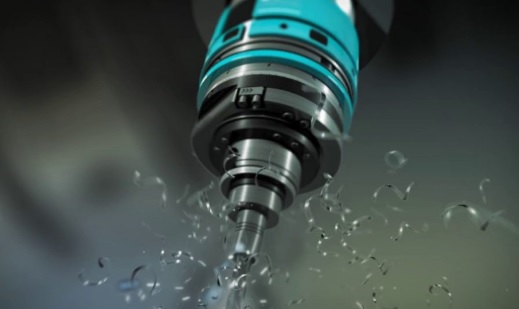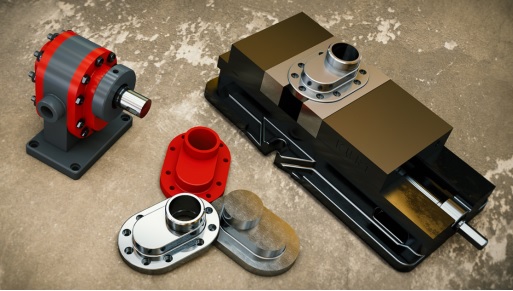CNC Milling, What is a CNC Milling Machine Used For?
NC technology
NC technology is to automatically control the operation of machine tools with digital information composed of numerical values and symbols. Compared with the traditional machine tool which relies on the operator to manipulate the handle for processing, the CNC machine tool relies on the control information sent by the NC system to control the movement of each axis of the machine tool in the form of pulses to process the contour shape of the part. Therefore, it is easy to accurately control and process complex two-dimensional and three-dimensional parts on CNC machine tools with 2-axis, 3-axis, 4-axis, and 5-axis linkage, which can be easily achieved. It is difficult to operate on traditional machine tools and is very difficult for operators. The experience and technical requirements are high. Traditional machining requires the operator to always focus on the movement of the machine tool and make appropriate handle controls in time; after the first piece of CNC machining is verified, the machining process almost no longer needs intervention, freeing the operator from the shackles, and can be used to prepare other production preparations Work, save human resources and improve production efficiency. Numerical control processing technology has been rapidly popularized and improved rapidly. At present, the CNC machine tools in service are generally CNC (Computer Numerical Control) CNC machine tools.
Since its inception, CNC machining technology has been widely used in the field of machining: such as CNC lathes, CNC boring and milling machines, CNC grinders, CNC punching machines, CNC cutting machines, CNC electric discharge (wire cutting) machines, CNC laser processing machine tools, etc. Turning, CNC boring and milling, and CNC wire cutting are the main force of CNC machining. CNC machine tools are the basic unit of flexible production lines and unattended workshops.

Main functions of CNC milling machine
The functions of different grades of CNC milling machines are quite different, but they should all have the following main functions:
1. Linear interpolation: one of the most basic functions of CNC milling.
2. Circular interpolation: one of the most basic functions of CNC milling.
3. Canned cycle: Canned cycle refers to the organic composition of the system itself, parameterized processing subroutines that are used to simplify programming, and are applied in a fixed instruction format, which are mainly used to realize some typical Requires repeated machining actions, such as machining various holes, threads, grooves, etc. The use of canned cycles can effectively simplify programming.
4. Tool compensation: generally includes tool radius compensation, tool length compensation, and tool position compensation functions.
Tool radius compensation-plane contour machining
Tool length compensation-set tool length
5. Mirror, rotation, zoom, translation:
The machining program is mirrored, rotated, zoomed, and translated through the CNC system of the machine tool to simplify programming.
6. Automatic acceleration and deceleration control:
The machine tool automatically adjusts the feed speed when the tool changes the direction of movement to maintain a good processing state, avoiding the deformation of the tool, damage to the surface of the workpiece, and unstable processing speed.
7. Data input and output and DNC function:
CNC milling machines generally input and output data through the RS232C interface, including processing procedures and machine parameters. When the executed processing program exceeds the storage space, DNC processing should be used, that is, the external computer directly controls the CNC milling machine for processing.
8. Subroutine function:
For processing actions or processing areas that need to be repeated multiple times, you can compile it into a subroutine, call it when the main program needs it, and realize multi-level nesting of subroutines to simplify program writing.
9. Self-diagnosis function:
Self-diagnosis is the self-diagnosis of the numerical control system in operation. It is an important function of the numerical control system and plays an important role in the maintenance of CNC machine tools and program debugging.
10. User macro function:
Variables are used in the program, and the program function is achieved by assigning and processing the variables. This kind of variable program is called a macro program. The use of macro programming can further improve and expand the performance of the CNC milling machine.

What is a CNC milling machine used for?
CNC milling machines are currently mainly used in the mold industry, small batch parts processing, product trial production, reducing or even eliminating special tools, fixtures, measuring tools and special tools. The main processing content:
1. Plane parts
Parts whose profile is flat or can be developed into a plane are called flat parts. The processing characteristics of this type of parts are: generally they can be processed with two-coordinate linkage, and its CNC milling is relatively simple.
2. Surface parts
Parts whose profile is space and cannot be developed into a plane are called curved parts, and their processing characteristics are: any way of processing, the milling cutter and the surface of the part are always in point contact.
3. Variable bevel parts
The part whose profile cannot be developed into a plane but has a straight line is called a variable bevel part. Its processing characteristics are: during peripheral milling, the contact between the processed surface of the part and the cylindrical surface of the milling cutter can be a straight line.
4. Hole and thread
Use fixed-size tools for drilling, expanding, reaming, boring and tapping, etc. General CNC milling has boring, drilling and reaming functions.


